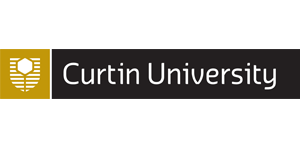
Achieving academic and operational excellence through business intelligence
Curtin University uses SAS® Visual Analytics to provide reporting across the organization
Tucked away in one of the world’s most isolated cities, Curtin University is surging onto the world stage with its exemplary research and culture of innovation.
The Perth-based institution ranks in the top 2 percent of universities worldwide – with the ambitious goal of cracking the top 100 list. At this level, competition for students and funding is fierce. To help drive academic and operational excellence, Curtin uses a sophisticated data analytics and reporting environment.
Our reporting has enriched the university considerably. We can rely on the data and be confident it’s the truth.
David Dignam
Business Intelligence Manager
“We must run our business well to compete at the highest level,” says David Dignam, Business Intelligence Manager at Curtin. The university manages a complex matrix of 60,000 students and 7,000 staff members spread across four countries. “Gender equity, financial targets, cultural responsibility … we track many different measures to ensure we’re meeting our own high standards.”
Automated reports surface insight
Dignam’s team collects data from across the university and publishes more than 20 self-service reports for an internal audience ranging from intern to chancellor. Before it can be shared, the data is integrated from many source systems and deposited into a data warehouse where it undergoes strict quality measures using a range of business rules and data validation steps. This creates a solid foundation from which to deploy analytics.
“When it comes to visualization, you need to ensure you’ve got high quality data to tell the right story,” Dignam says. SAS Visual Analytics provides the visualization layer on top of the data warehouse, enabling faculty to track everything from course profitability to annual leave.
Curtin’s journey to self-service reporting began with ad hoc requests from different areas of the business. Dignam saw an opportunity to save time through automation and invested in a high-performance cloud reporting platform powered by SAS Grid Manager and hosted in Amazon Web Services.
“Automating reports has saved the business lots of time,” Dignam says. Curtin uses the in-memory capability of SAS Visual Analytics to load critical data into memory and then produce self-service reports. “The SAS platform reduces our storage requirements as well,” Dignam adds.
Using analytics to ensure academic integrity
The cornerstone of Curtin’s vast reporting network is its enterprise data warehouse and variety of SAS tools used for distributing key information, such as research data. Research generates income and strengthens the university’s profile and reputation. Previously, researchers lacked a practical way to track expenses and available funds. With the help of SAS Enterprise Guide, the army of 500 researchers can now track their monthly funding balance to fully exploit the budget.
Another key output of Curtin’s reporting framework is its teaching and learning dashboards. These dashboards enable professors and academic staff to log into a secure environment and see key performance indicators, such as student satisfaction ratings and enrollment figures. This is evolving into personalized dashboards that enable staff to benchmark themselves against peers, creating a high-performance culture that in turn attracts better lecturers and researchers.
The dashboards also inform Curtin’s stringent assessment quality panels. Ensuring academic integrity is critical to both maintaining a culture of excellence and securing government funding. SAS Visual Analytics is used to surface survey data that enables key stakeholders to monitor the university’s progress against its governance, risk management, compliance and culture objectives. To serve this diverse audience, reports must be dynamic, user-friendly, historical and tailored for user type.
“Our reporting has enriched the university considerably,” Dignam says. “We can rely on the data and be confident it’s the truth. This helps us make better decisions, be more efficient and increase effectiveness. Integrating techniques, such as data visualization, into key business processes drives evidence-based decisions, which converts corporate strategy into operational effectiveness.”
Functionality explored
When you’ve got thousands of information consumers, security is a major concern. Curtin uses an advanced security model to avoid creating unique reports for each user. “We want people to log into the system and see only the relevant data for them,” Dignam says. The SAS security model enables Curtin to build a single report and control what information is shared with each user.
Curtin uses the theme builder within SAS Visual Analytics to design reports that comply with corporate branding standards. Corporate logos and branded color schemes give dashboards a distinctive look. Curtin also uses the custom graphs builder to share certain data points because “sometimes a bar chart doesn’t cut it,” Dignam says.
Becoming an innovation leader
Automated reporting has enabled Curtin to shift some employees into other roles. Reports have replaced hours of number crunching. “We recently automated a report for Finance that was taking five people several hours a week to create,” Dignam says. “Over the past three years, I estimate we’ve been able to repurpose over 10 full-time employees into more valuable tasks.”
Curtin recognizes that becoming a global innovation leader requires innovative technology. The university’s investment in a cloud-based infrastructure has enabled it to swiftly produce business-critical insights. As its number of users grow, so will its level of analysis.
Dignam offered this advice to others looking to establish a sophisticated reporting environment. “It’s important to collaborate with the business to make sure you’re aligned with corporate objectives. Before you get started, understand the money you’re going to spend, what the quick wins are, and what projects you can tick off first. Consider what processes you can eliminate though reporting and what information will make people better at their jobs.”

Challenge
- The university needed automated, self-service reports to securely disseminate data to a wide variety of users.
Solution
Benefits
- Researchers and academic staff now have pertinent data at their fingertips.
